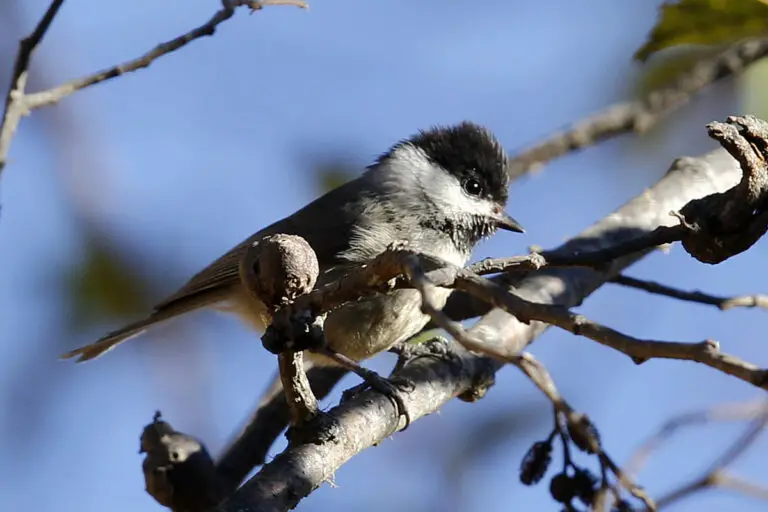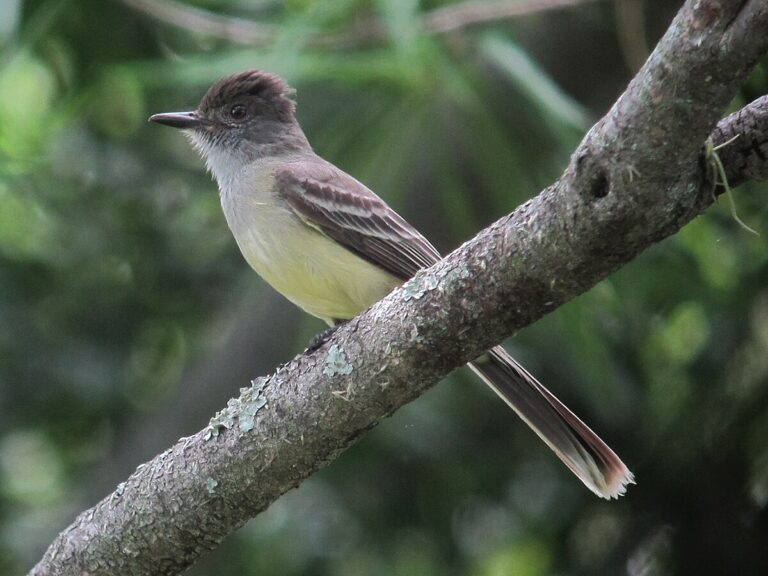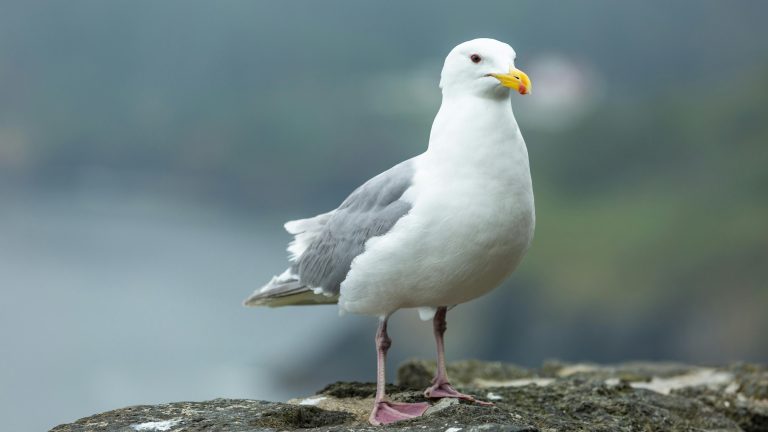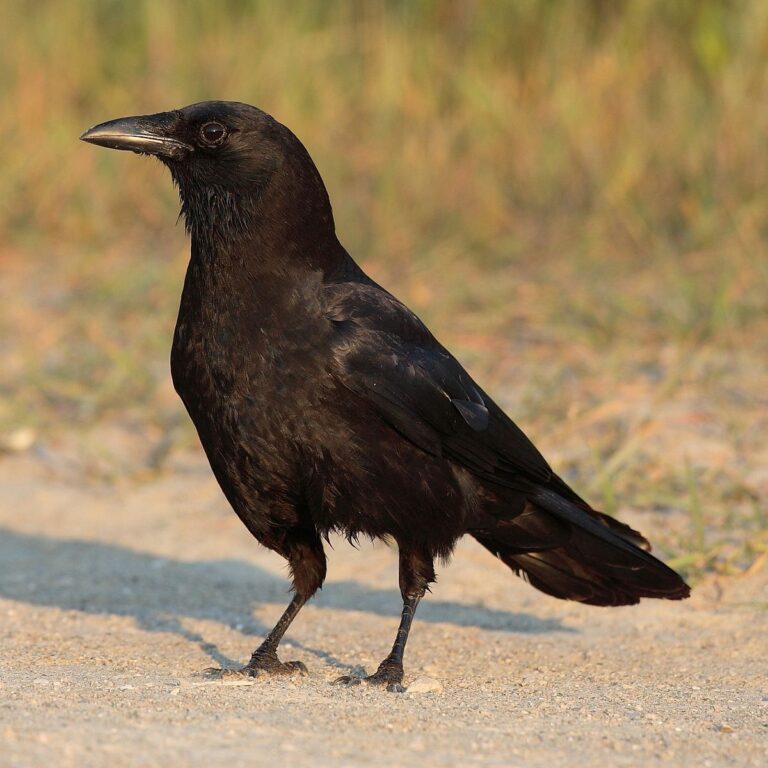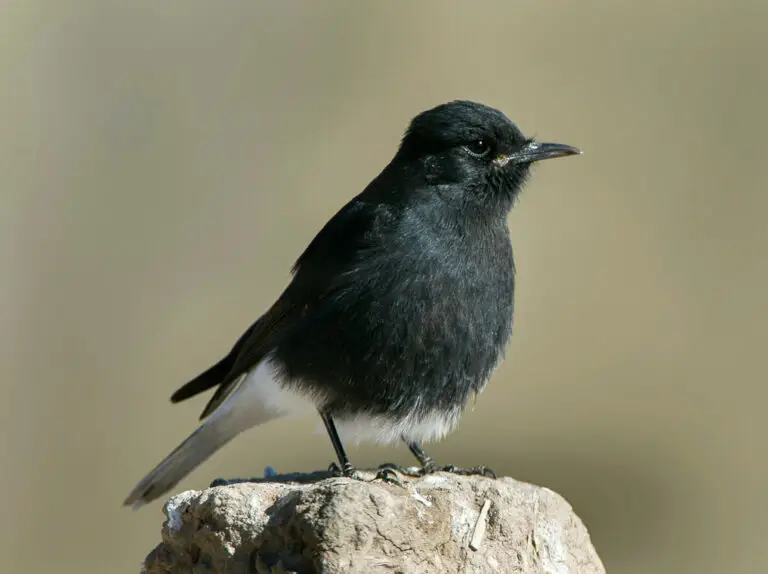Deer (Odocoileus virginiana)
Foraging languidly among forests and plains, the deer is one of the most familiar and recognizable sights in all of nature.
Deer Scientific Classification
- Kingdom: Animalia
- Phylum: Chordata
- Class: Mammalia
- Order: Artiodactyla
- Family: Cervidae
- Scientific Name: Odocoileus virginianus (White-tailed deer)
Deer Conservation Status
The conservation status varies significantly among different species of deer. For example:
- White-tailed Deer (Odocoileus virginianus): Least Concern
- Red Deer (Cervus elaphus): Least Concern
- Moose (Alces alces): Least Concern
- Sambar Deer (Rusa unicolor): Vulnerable
However, some species of deer are indeed Near Threatened or have different statuses depending on their geographical populations.
Deer Locations
Deer species are widespread and can be found in diverse habitats across:
- Asia: Various species such as the Sika deer (Cervus nippon) and the Indian hog deer (Axis porcinus).
- Eurasia: Includes species such as the Red deer (Cervus elaphus).
- Europe: Home to species like the Roe deer (Capreolus capreolus).
- North America: Includes the White-tailed deer (Odocoileus virginianus) and Mule deer (Odocoileus hemionus).
Deer are highly adaptable and can be found in a range of environments, from forests and grasslands to wetlands and mountains.
Deer Facts
Main Prey:
- Acorns
- Fruit
- Grass
Distinctive Feature:
- Long ears
- Some male species have antlers
Habitat:
- Dense forests
- Planted areas
Diet:
- Herbivore
Average Litter Size:
- 1
Lifestyle:
- Herd
Favorite Food:
- Acorns
Type:
- Mammal
Slogan:
- There are around 40 different species!
Deer Physical Characteristics
Color:
- Brown
- White
- Tan
- Orange
Skin Type:
- Fur
Top Speed:
- 43 mph
Lifespan:
- 10 – 20 years
Weight:
- 10kg – 450kg (22lbs – 990lbs)
Height:
- 60cm – 105cm (24in – 206in)
Additional Facts
- Reproduction: Fawns (young deer) are usually born with spots that provide camouflage.
- Communication: Deer communicate using a variety of vocalizations, body language, and scent markings.
- Adaptations: Deer have adapted to a variety of environments from tropical forests to tundra.
Deer are a diverse group of mammals with many species spread across the world, each adapted to their unique habitats. Some of the most well-known species include the white-tailed deer, red deer, mule deer, and reindeer (caribou). The presence of antlers, usually in males, is one of the most notable features, used for defense and mating displays. Deer play important roles in their ecosystems as grazers and prey for larger predators.
Deer are incredible animals found all over the world, having adapted to survive in various challenging environments. Their majestic antlers, often seen on males, are one of their most striking features, used for protection and attracting mates. When threatened, deer can quickly leap away with impressive speed and agility. They have also developed the unique ability to digest a wide range of vegetation, making them versatile eaters. In many ways, deer are a true evolutionary success story.

Interesting Deer Facts
- Cultural Significance: Deer have held an important place in various cultures and mythologies worldwide. The famous cave paintings of Lascaux, which date back around 17,000 years, include detailed images of deer alongside horses and other animals, showcasing their significance to early humans.
- Symbolism: Representing strength and nobility, deer were often featured on the flags, banners, and coats-of-arms of medieval Europe.
- Terminology: Male deer are known as bucks or stags, while females are called does. For larger species, the terms are bull and cow.
- Antler Cycle: Deer shed their antlers and grow them back every year after the mating season, a unique trait among mammals.
Scientific Name
- Family: Cervidae
- Order: Artiodactyla
Etymology: The name Cervidae comes from the Latin word “Cervus,” which means stag or deer.
Order Artiodactyla:
- Includes all even-toed ungulates (hoofed animals with an even number of toes).
- Members include giraffes, bison, hippos, pigs, camels, sheep, and cattle.
- Recent evidence suggests that cetaceans (whales, dolphins) are also part of this order, having evolved from even-toed ungulates millions of years ago.
Subfamilies of Cervidae
- Capreolinae (New World Deer):
- Includes reindeer, white-tailed deer, and moose.
- Known for their evolutionary origin in the New World.
- Cervinae (Old World Deer):
- Includes elk, red deer, tropical muntjacs, and tufted deer.
- Known for their evolutionary origin in the Old World.
- Hydropotinae:
- Represented by the water deer.
- Unique in its evolutionary and morphological characteristics.
Key Distinctions: The terms “Old World” and “New World” refer to their evolutionary origins, not their current ranges. They are distinguished by differences in skeletal morphology.
Diversity in the Cervidae Family
For most people, familiar members of the Cervidae family include:
- White-tailed deer
- Red deer
- Mule deer
- Elk
- Caribou
- Moose
However, the Cervidae family is incredibly diverse:
- Estimates of species range from at least 40 to more than 50.
- Each species is unique in its own way, showcasing a wide range of adaptations and characteristics.
Deer have a fascinating evolutionary history and remain a crucial part of many ecosystems and cultures around the world.
Evolution
Evolutionary History of Deer
Origins:
- Evidence from the fossil record suggests that deer likely evolved around 20 million years ago.
- The earliest deer species were probably small animals, resembling the modern-day mouse deer.
Early Characteristics:
- These early deer had simple, rudimentary antlers and canine tusks.
Pleistocene Era:
- Many deer species flourished during the Pleistocene era (2.6 million to 11,700 years ago).
- One notable species from this period is the Irish elk, which had enormous antlers weighing up to 90 pounds.
The evolution of deer showcases a remarkable journey from small, tusked creatures to the diverse and widespread family of Cervidae we see today.

Appearance and Behavior
Most deer species share a set of basic characteristics:
- Hooves: Two hooves on each foot.
- Stomach: Four-chambered stomach for efficient digestion.
- Legs: Long and spindly legs for agility and speed.
- Tail: Short tails.
- Coat Color: Typically varies between brown, red, or gray.
- Activity: Proclivity for twilight hours (crepuscular behavior).
- Antlers: The most prominent feature, present in males, with females lacking them except in caribou (or reindeer) where both genders have antlers. The water deer is unique with neither gender growing antlers; instead, they have tusk-like canines.
Antlers and Their Role
- Composition: Antlers are composed of bone covered by skin and blood vessels called velvet during growth.
- Growth and Shedding: Antlers grow over several months, and the velvet is shed once they reach full size.
- Purpose: Used for combat, establishing social hierarchy, and attracting mates. The size and health of antlers signal the male’s reproductive fitness and overall health.
- Variation: Antler size, curvature, and structure vary greatly between species. For example, moose have large, palmate antlers, while others have long beams with branches or simple spikes.
Unique Features of Reindeer
- Vision: Reindeer can see ultraviolet light, which helps them spot predators more effectively.
Social Behavior
- Group Living: Deer are social animals, often forming small groups for feeding, mating, and protection. In areas with abundant food, large herds can form.
- Migration: Some species are migratory and travel long distances with their herds.
- Communication: Deer use their acute sense of smell and vocalizations to communicate. They have facial glands near their eyes that release pheromones for marking territory, and other scent glands on their legs and feet.
Size Variation Among Species
- Smallest Deer: The pudu, ranging from one to three feet in length.
- Largest Deer: The moose, which can reach up to 10 feet long and weigh as much as 1,800 lbs.
- Common Deer: The white-tailed deer, with a height and weight similar to that of a human. In general, males are larger than females in most species.
Deer are fascinating and diverse animals, adapted to a wide range of environments and exhibiting a rich array of behaviors and physical traits.
Habitat
Deer are found on nearly all continents, occupying a wide range of habitats:
- North America: Large, unbroken expanses provide ample habitats for many deer species.
- South America: Various species thrive in diverse environments.
- Europe and Asia: Home to numerous species, including expansive populations in forests and grasslands.
- Africa: Contains only one native species, the Barbary red deer.
Introduced Species
- Australia: No native deer species, but several have been introduced and now live in the wild.
Habitats
Deer are highly adaptable and inhabit a variety of environments:
- Deciduous Forests
- Tropical Rainforests
- Wetlands
- Grasslands
- Tundra: Some species live in the cold northern tundra, feeding on sparse vegetation.
- Urban and Suburban Settings: Deer can adapt to human environments, thriving despite urban encroachment.
Preferred Locations
- Ecotones: Most frequently found in transitional areas between forests and open plains.
Deer’s ability to adapt to diverse habitats and environments, including urban areas, makes them one of the most widespread and resilient groups of animals on the planet.

Diet
Diet: Deer are herbivores, and their diet includes:
- Leaves
- Grass
- Lichen
- Buds
- Fruit
- Herbs
Ruminant Characteristics:
- Four-Chambered Stomach: Deer are ruminants, which means they have a specialized stomach with four chambers to break down and ferment plant material.
- Microbial Assistance: Each stomach chamber contains various microbes that aid in breaking down tough plant materials.
- Cud Chewing: After initial processing in the first stomach chamber, deer regurgitate the partially digested food (cud) to chew it again, making it easier to digest.
- Selective Feeding: Unlike many other ruminants like sheep and cattle, deer are more selective eaters. They prefer high-quality, easily digestible food. This selectivity is due to the high energy and nutritional demands of growing their antlers.
Predators and Threats
Predators: Deer are a crucial food source for many predators, including:
- Bears
- Mountain lions
- Jaguars
- Tigers
- Lynxes
- Coyotes
- Wolves
- Large raptors
Scavengers: Birds and small mammals often feed on deer carcasses.
Vulnerability:
- Fawns: Young fawns are particularly vulnerable to predation.
- Adults: Though not defenseless, adult deer usually prefer to flee rather than fight predators.
Defensive Abilities:
- Speed: White-tailed deer can sprint up to 30 MPH.
- Leaping: They can leap distances of up to 30 feet.
- Communication: Deer can warn nearby herd members if a threat is spotted.
- Size Protection: Larger species like moose rely on their size for protection.
Human Impact and Conservation
Historical Importance:
- Food and Materials: Deer have historically provided food, clothing, and materials for human societies.
Modern Threats:
- Hunting and Habitat Loss: These are significant threats, particularly in South Asia and the Pacific region.
- Climate Change: Changing habitats may force deer to migrate northward, presenting new survival challenges.
Conservation Efforts:
- Responsible Stewardship: With proper management and conservation efforts, deer populations can be maintained at healthy levels.

Reproduction, Babies, and Lifespan
Breeding Season: Occurs annually for a short period. Most species practice polygyny, with dominant males mating with multiple females, although a few species are monogamous.
Mating Behavior: During the breeding season, males exhibit aggressive behaviors to guard territories and compete for mates. Antler size plays a significant role in reproductive success.
Gestation and Offspring:
- Gestation Period: Lasts between six to eight months.
- Offspring: Typically one or two offspring, occasionally three.
- Young Deer: Known as fawns or calves, depending on the species.
- Camouflage: Fawns are born with white spots for camouflage and are hidden by their mothers while they are still vulnerable.
Parental Care:
- Weaning: Offspring are weaned at two to five months but may stay with the mother for up to a year.
- Role of Males: Males usually play minimal roles in raising young fawns.
Antler Growth: Males begin growing antlers annually after their first year of life.
Life Expectancy:
- Wild: Deer can live around 12 years in the wild, although hunting, predation, and vehicle collisions can shorten their lifespan significantly.
- Factors Affecting Lifespan: Many deer do not live beyond their fifth year due to various threats.
Population
Historical Decline:
- Many deer species experienced population declines in the early and mid-20th centuries due to commercial exploitation.
Conservation Success:
- Thanks to conservation efforts, deer populations have rebounded in recent years.
- The population size of the common white-tailed deer is estimated to be around 30 million.
Overpopulation Issue:
- Overpopulation has become a significant problem in some areas due to the decline of natural predators.
- Regulated hunting is encouraged in many states as a means of population control.
Distribution of Deer Species in the Americas
White-tailed Deer:
- Occupies a large range from the South American coast through Central America to the eastern United States and parts of Canada.
Mule Deer:
- Tends to occupy the western United States and overlaps with the white-tailed deer in some areas.
Clustered Populations:
- Enormous clusters of various deer species, including white-tail deer, mule deer, caribou, moose, and elk, can be found in the national parks of western Canada.
Conservation Challenges and Strategies
Predator Decline:
- Human hunting of natural predators has contributed to deer overpopulation.
- Regulated hunting is used as a management tool to control deer populations and maintain ecosystem balance.
Habitat Preservation:
- Protecting natural habitats and creating wildlife corridors are essential for maintaining healthy deer populations.
Public Awareness:
- Educating the public about the importance of deer conservation and responsible hunting practices is crucial for long-term sustainability.

Endangered Species
Despite their widespread presence, many species and subspecies of deer are facing significant threats to their survival:
- Endangered or Critically Endangered:
- Persian Fallow Deer
- Chilean Huemul
- Kashmir Stag
- Indian Hog Deer
- Bawean Deer
- Eld’s Deer
- Approaching Vulnerable Status:
- Reindeer
- Water Deer
- Barasingha
- Others
Conservation Efforts and Challenges
- Extinction Risk:
- Some deer species, like Pere David’s Deer, have become extinct in the wild.
- Reintroduction efforts are underway to reintroduce species like Pere David’s Deer back into their natural habitat.
- Habitat Loss:
- Loss of habitat due to human activities such as deforestation, urbanization, and agricultural expansion threatens many deer species.
- Illegal Hunting and Poaching:
- Illegal hunting and poaching for meat, trophies, and traditional medicine contribute to the decline of deer populations.
- Climate Change:
- Climate change and its impacts on habitat availability, food sources, and migration patterns pose additional challenges to deer conservation.
Conservation Strategies
- Protected Areas:
- Establishing and maintaining protected areas, national parks, and wildlife reserves to conserve deer habitats.
- Habitat Restoration:
- Restoring degraded habitats and creating wildlife corridors to facilitate the movement of deer populations.
- Anti-Poaching Measures:
- Enforcing laws against illegal hunting and poaching through increased surveillance and penalties.
- Public Awareness and Education:
- Educating local communities and raising public awareness about the importance of deer conservation and the threats they face.
Types of Deer
Well-Known Deer Species Worldwide
Capreolinae:
- White-Tailed Deer:
- Found in North America, identified by white underside of tail.
- Males weigh up to 400 pounds, regrow antlers annually.
- Red Deer:
- Found in Europe, parts of Asia, and Northern Africa, introduced in New Zealand and Australia.
- Adult height: about 4 feet, reddish-brown coat.
- Mule Deer:
- Indigenous to western North America, known for mule-like ears.
- Some species migrate hundreds of miles during winter.
- Elk:
- Found in North America, Central America, and parts of Asia.
- Can weigh up to 700 pounds, males can run up to 40 mph.

- Caribou (Reindeer):
- Inhabit arctic and subarctic climates, found in North America, Europe, and Asia.
- Both males and females grow antlers, males’ antlers can reach up to 50 inches.
- Moose:
- Largest member of the deer family, found in North America, Europe, and Asia.
- Can weigh up to 1,800 pounds, tend to be solitary and aggressive when threatened.
- Brocket Deer:
- Small-medium deer found in Yucatan Peninsula, Central and South America, and Trinidad.
- Key Deer:
- Subspecies of white-tailed deer, found only in the Florida Keys.
- Smaller than white-tailed cousins.
- Pudu:
- World’s smallest deer, Northern Pudu found in South America, Southern Pudu in Chile and Argentina.
- Black-Tailed Deer:
- Found in western North America.
Cervinae:
- Barasingha (Swamp Deer):
- Large deer of India with unusual three-tined antlers.
- Chital (Axis Deer):
- Native to India, Nepal, Sri Lanka, and Bangladesh.
- Fallow Deer:
- Native to Europe, large with pale brown fur and creamy white spots.
- Muntjac:
- Nine types found in southern and southeast Asia, known for barking when sensing danger.
- Pere David’s Deer:
- Nearly hunted to extinction, now reintroduced in China.
- Persian Deer:
- Found in Iran and Israel, similar to fallow deer.
- Red Deer (also known as Elk or Wapiti in North America):
- Huge range including Europe, Asia, Iran, and Northwestern Africa.
- Elk (North American):
- Second largest species in the deer family, found in North America.
- Sambar Deer:
- Native of India, known for large size and thick, dark brown coat.
- Sika Deer:
- Originally found in Vietnam and Russia, now found in large numbers in Japan.
Hydropotinae:
- Chinese Water Deer:
- Native to Korea and the Yangtze River Valley of China.
- Males lack antlers, grow tusks protruding from sides of mouth.
Final Words
Deer are a diverse and widespread group of mammals found on nearly every continent. They play vital roles in ecosystems as both prey and herbivores, influencing vegetation dynamics and providing food for numerous predators. Despite their adaptability and resilience, many deer species face threats such as habitat loss, hunting, and climate change, leading to population declines and endangerment of several species. Conservation efforts are crucial to safeguarding deer populations and preserving their ecological significance for future generations.
Reference:
